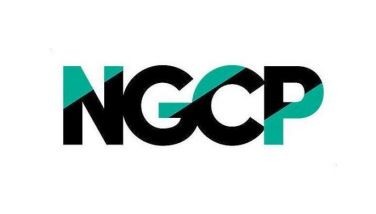Planned reform of financial instruments reporting
(Conclusion)
More or less fair value?
Is the price for simplification of the accounting standard that more instruments need to be accounted for at Fair Value? This is one of the questions most frequently asked about the IAS 39 replacement project. The answer seems to be that it depends on the circumstances of each entity in terms of the way in which it manages the instruments it holds, the nature of those instruments and the classification elections it chooses to make. However, some major directional changes can be highlighted.
• Many available-for-sale (AFS) debt instruments that currently are measured at fair value will qualify for amortized cost accounting, for example, simple debt instruments that are quoted in an active market (such as vanilla government and corporate bonds). However, those that do not qualify will be measured at fair value through profit or loss rather than through other comprehensive income (equity).
• Hybrid instruments will no longer be split into a derivative component accounted for at fair value, and a host contract accounted for differently which results in a larger volume of fair value instruments.
• The guidance on contractually linked instruments will mean that some asset-backed securities that may have qualified previously for amortized cost or AFS treatment will be required to be accounted for at fair value through profit or loss if they do not satisfy the conditions for amortized cost accounting for contractually linked tranches. This impacts particularly junior tranches that have an exposure to credit risk that is greater than a pari passu investment in the pool of underlying assets. Many investments in senior tranches that were previously accounted for as AFS assets may qualify for amortized cost measurement.
6) Reclassification after initial recognition
As discussed earlier the new classification model is based on an entity’s business model and the contractual terms of the asset. Therefore, IFRS 9 requires an entity to reclassify financial assets between the fair value and amortized cost categories if there is a change in its business model. In all other circumstances reclassification is prohibited. And changes to the business model are expected to be rare.
Financial assets must be reclassified on the first day of the reporting period following the change in business model.
7) Fair value option
The IASB retained the option for an entity to designate an instrument, that would otherwise have been classified in the amortized cost category, to be at fair value through profit or loss if that designation eliminates or significantly reduces an accounting mismatch. The election is available only on initial recognition of the asset and is irrevocable.
8) Fair value through other comprehensive income (OCI)
Since the cash flows generated by equity instruments do not represent payments of interest or principal (i.e. dividends are not payments reflecting the time value of money) equity instruments are not eligible to be categorized at amortized cost. The default category for equity instruments is therefore at fair value through profit or loss. However IFRS 9 allows an exception related to the presentation of changes in fair value for particular equity investments. IFRS 9 permits an entity to elect, on an investment-by-investment basis, to recognize in OCI (which falls within equity) changes in the fair value of that equity investment if it is not held for trading.
These fair value gains or losses are not reported as part of an entity’s profit or loss, even when a gain or loss is realized (effectively converted to cash) through disposal, or impairment. Only dividends received on such investments are being recognized in profit or loss, to the extent that they are a return on, rather than a return of, the investment.
9) Transition arrangements
The new standard is effective for annual periods beginning on or after Jan. 1, 2013. The new standard permits entities to adopt it early. There is also transition relief for entities that choose to adopt the new requirements early, including relief from having to restate comparative information if an entity adopts the new requirements for financial periods beginning before Jan. 1, 2012.
10) Conclusion
The introduction of IFRS 9 Financial Instruments is one of the most direct and far-reaching accounting reforms as a result of the financial crisis. IFRS 9 aims to make the accounting of financial instruments simpler, clearer and easier to use. However is this objective really achieved?
The most obvious benefit from IFRS 9 is to simplify the different categories of financial asset as IFRS 9 narrows down financial instruments into two measurement categories. In addition the complex and rule-based requirements in IAS 39 for embedded derivatives have been eliminated by no longer requiring that embedded derivatives be separated from the financial asset host contracts.
Also positive to mention is that the application of IFRS 9 will likely result in a greater alignment of accounting and business view. Where an entity has classified an instrument based on its business model, there will be greater consistency between the way management views their financial assets and the way they are required to be accounted for under IFRS. As a consequence management should be able to better explain financial reporting results.
On the other hand when we look at the new accounting requirements for equity instruments there exist de facto a third category: “fair value through other comprehensive income” which counteracts the principle of a less complex classification system. In practice it has to be seen how many entities use this classification option, as the recycling of fair value gains and losses from OCI to profit or loss is not permitted, even in the event of impairment or derecognition of the financial asset.
With the elimination of the cost exception for unquoted equity instruments IFRS 9 forces entities to come up with a fair value for equity instruments that do not have a quoted market price. However for some unquoted equity instruments it can be very difficult to obtain sufficient information to measure their fair value without making judgments that result in a measure that is so subjective that it is not decision-useful. Is the information reliable? Is it comparable and consistent with other companies? Moreover the cost of gathering information and estimating fair value could exceed the benefits.
Additional complexity arises due to the fact that the standard is not yet final. So far IFRS 9 only covers the classification and measurement of financial assets. The second and third phase of the project to replace IAS 39 is still in progress. In the meantime we will have both IAS 39 as well as IFRS 9 standards available. In addition the IASB is working on other projects (see part 1 of this articles) which have an impact on financial instrument accounting. This kind of patchwork with cross references on IAS 39 increases the complexity for prepares and users.
The implementation of IFRS 9 will be a significant exercise as it is not just a facelift but an overhaul of IAS 39. However, our talks with accountants and CFOs showed that many entities are still uncertain about how and when to adopt IFRS 9. Giving the far reaching nature of the changes, entities have to familiarize with the upcoming requirements and work out their position. The assessment starts from the top because we are talking about business strategy, so it is not something that you can delegate to a finance manager level. Companies need to review the business from top down to satisfy the first classification criteria (the Business Model Test) and management must come up with a decision about the business models in place. Once that decision is made finance managers need to go through their portfolio and get all the background information on each and every investment in order to assess whether they satisfy the second criteria (The Characteristic of the Instrument Test). The question is which investment goes into which category.
Without a thorough assessment of the implications, the strategic action necessary to respond to the changes may be missed. And the fresh look at ones business model combined with some changes to how certain instruments will be accounted for provide an opportunity to undertake a review of the business model that may result in new business opportunities being explored and other businesses being reassessed based on the new rules around how to account for their performance.
Company executives should seize the opportunity and not miss it by just undertaking an accounting compliance exercise.
(Armin M. Rau is a senior manager for Audit and Reinhard Klemmer is a Seconded Partner from KPMG Germany to Manabat Sanagustin & Co., CPAs, a member firm of the KPMG network of independent member firms affiliated with KPMG International Cooperative (KPMG International ), a Swiss entity.
The views and opinions expressed herein are those of the author and do not necessarily represent the views and opinions of Manabat Sanagustin & Co., CPAs. For comments or inquiries, please email [email protected] or mquizon @kpmg.com)
- Latest
- Trending
























